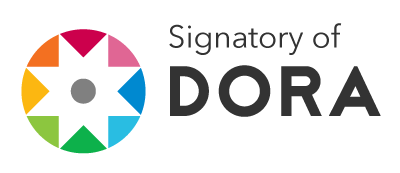
Detalles del artículo
Uso de licencias Creative Commons (CC)
Todos los textos publicados por el Boletín Mexicano de Derecho Comparado sin excepción, se distribuyen amparados con la licencia CC BY-NC 4.0 Internacional, que permite a terceros utilizar lo publicado, siempre que mencionen la autoría del trabajo y la primera publicación en esta revista. No se permite utilizar el material con fines comerciales.
Derechos de autoras o autores
De acuerdo con la legislación vigente de derechos de autor el Boletín Mexicano de Derecho Comparado reconoce y respeta el derecho moral de las autoras o autores, así como la titularidad del derecho patrimonial, el cual será transferido —de forma no exclusiva— al Boletín para permitir su difusión legal en acceso abierto.
Autoras o autores pueden realizar otros acuerdos contractuales independientes y adicionales para la distribución no exclusiva de la versión del artículo publicado en el Boletín Mexicano de Derecho Comparado (por ejemplo, incluirlo en un repositorio institucional o darlo a conocer en otros medios en papel o electrónicos), siempre que se indique clara y explícitamente que el trabajo se publicó por primera vez en este Boletín.
Para todo lo anterior, deben remitir la carta de transmisión de derechos patrimoniales de la primera publicación, debidamente requisitada y firmada por las autoras o autores. Este formato debe ser remitido en PDF a través de la plataforma OJS.
Derechos de lectoras o lectores
Con base en los principios de acceso abierto las lectoras o lectores de la revista tienen derecho a la libre lectura, impresión y distribución de los contenidos del Boletín por cualquier medio, de manera inmediata a la publicación en línea de los contenidos. El único requisito para esto es que siempre se indique clara y explícitamente que el trabajo se publicó por primera vez en el Boletín Mexicano de Derecho Comparado y se cite de manera correcta la fuente incluyendo el DOI correspondiente.

Esta obra está bajo una licencia internacional Creative Commons Atribución 4.0.
Citas
Allen, Stefan et. al., “Examining the Relationship between Traumatic Brain Injury and Substance use Outcomes in the Canadian Population”, Substance Use & Misuse, vol. 51, núm. 12, 2016.
American Psychological Association, “Amicus curiae Brief Filed in the US Court of Appeals for the Eighth Circuit in Hodgson v. Minnesota, 497 US 417 (1990)”, Retrieved February, vol. 11, 1987.
American Psychological Association, “Amicus curiae Brief Filed in US Supreme Court in Roper v. Simmons, 543 US 551 (2005)”, Retrieved February, vol. 11, 2004.
Asamblea General de las Naciones Unidas, Convención Internacional de los Derechos del Niño, adoptada el 20 de noviembre de 1989.
Asamblea General de las Naciones Unidas, Directrices de las Naciones Unidas para la Prevención de la Delincuencia Juvenil (Directrices de Riad), Resolución 45/112.
Asamblea General de las Naciones Unidas, Reglas Mínimas de las Naciones Unidas para la Administración de la Justicia de Menores (Reglas de Beijing), 28 de noviembre de 1985, resolución 40/33.
Asamblea General de las Naciones Unidas. Convención Internacional de los Derechos del Niño, adoptada el 20 de noviembre de 1989.
Auyero, Javier y Berti, María Fernanda, La violencia en los márgenes. Una maestra y un sociólogo en el conurbado bonaerense, Buenos Aires, Katz, 2013.
Barbalat G. et al., “Risk-Taking in Adolescence: A Neuroeconomics Approach”, L’Encephale, vol. 36, núm. 2, 2010.
Baron-Cohen, Simon et al., “Recognition of Faux Pas by Normally Developing Children and Children with Asperger Syndrome or High-Functioning Autism”, Journal of Autism and Developmental Disorders, vol. 29, núm. 5, 1999.
Bergen-Cico, Dessa K. y Lape, Megan E., “Age of First Use as a Predictor of Current Alcohol and Marijuana Use Among College-Bound Emerging Adults”, Journal of Child & Adolescent Substance Abuse, vol. 22, núm. 3, 2013.
Botdorf, Morgan et al., “Adolescent Risk-taking is predicted by individual differences in cognitive control over emotional, but not non-emotional, response conflict”, Cognition and emotion, vol. 31, núm. 5, 2017.
Burnett, Stephanie et al., “Adolescents’ Heightened Risk-Seeking in a Probabilistic Gambling Task”, Cognitive Development, vol. 25, núm. 2, 2010.
Caramelo, G. et al., Código Civil y Comercial de la Nación comentado, Buenos Aires, Infojus, 2015.
Cauffman, Elizabeth y Steinberg, Laurence, “(Im)maturity of Judgment in Adolescence: why Adolescents may be Less Culpable than Adults”, Behavioral sciences & the law, vol. 18, núm. 6, 2000.
Chambers, R. Andrew et al., “Developmental Neurocircuitry of Motivation in Adolescence: A Critical Period of Addiction Vulnerability”, American Journal of Psychiatry, vol. 160, núm. 6, 2003.
Chen, Li-Hui et al., “Carrying Passengers as a Risk Factor for Crashes Fatal to 16-and 17-Year-Old Drivers”, Jama, vol. 283, núm. 12, 2000.
Churchland, Patricia S., El cerebro moral, Barcelona, Paidós, 2012.
Clark, Duncan B. et al., “Alcohol, Psychological Dysregulation, and Adolescent Brain Development”, Alcoholism: Clinimal & Experimental Research, vol. 32, núm. 3, 2008.
Comité de los Derechos del Niño de las Naciones Unidas, Observación general núm. 20 (2016) sobre la efectividad de los derechos del niño durante la adolescencia, 6 de diciembre de 2016.
Comité de los Derechos del Niño, Observación general núm. 5, Medidas Generales de aplicación de la Convención sobre los Derechos del Niño.
Corte Interamericana de Derechos Humanos, Opinión Consultiva OC-17/2002, Condición Jurídica y los Derechos Humanos del Niño, 28 de agosto de 2002, serie A, núm. 17.
Currie, Candace et al. (eds.), “Young People’s Health in Context: International Report from the HBSC 2001/02 Survey”, Health Policy for Children and Adolescents, núm. 4, Copenhagen, WHO Regional Office for Europe, 2004.
Dahl, Roland E., “Adolescent Brain Development: a Period of Vulnerabilities and Opportunities. Keynote Address”, Annals of the New York Academy of Sciences, vol. 1021, núm. 1, 2002.
Dishion, Thomas J. y Tipsord, Jessica M., “Peer Contagion in Child and Adolescent Social and Emotional Development”, Annu. Rev. Psycho., vol. 62, 2011.
Dukewich, Tammy L. et al., “Adolescent Mothers and Child Abuse Potential: an Evauation of Risk Factors”, Child Abuse & Neglect, vol. 20, núm. 11, 1996.
Eaton, Danice K. et al., “Youth Risk Behavior Surveillance-United States, 2007”, Morbidity and Mortality Weekly Report. Surveillance summaries (Washington, DC: 2002), vol. 57, núm. 4, 2008.
Eisler, Riane y Levine, Daniel S., “Nurture, Nature, and Caring: we Are, not Prisoners of Our Genes”, Brain and Mind, vol. 3, núm.1, 2002.
CDC, NCHS, “Public use data file and documentation: multiple cause of death for ICD-10 2005 data”, en Danice, K. Eaton, “Youth Risk Behavior Surveillance — United States”, 2007 Surveillance Summaries, June 6, 2008 / 57(SS04).
Escobar, María Josefina et al., “Brain Signatures of Moral Sensitivity in Adolescents with Early Social Deprivation”, Scientific Reports, vol. 4, 2014.
Eslinger, Paul J. et al., “Developmental Frontal Lobe Imaging in Moral Judgment: Arthur Benton’ s Enduring Influence 60 Years Later”, Journal of Clinical and Experimental Neuropsychology, vol. 31, núm. 2, 2009.
Evans, Gary W. et al., “Stressing Out the Poor: Chronic Physiological Stress and the Income-Achievement Gap”, Pathways, 2011.
Farahany, Nita A., “Neuroscience and Behavioral Genetics in US Criminal Law: an Empirical Analysis”, Journal of Law and the Biosciences, vol. 2, núm. 3, 2016.
Farrington, David P., “Key Results From the First Forty Years of the Cambridge Study in Delinquent Development”, en Thornberry, Terence P. y Krohn, Marvin D. (eds.), Taking Stock of Delinquency: An Overview of Findings from Contemporary Longitudinal Studies, Nueva York, Kluwer/Plenum, 2003.
Federal Bureau of Investigation, US Dept of Justice, & United States of America. Age-specific arrest rates and race-specific arrest rates for selected offenses, 2003.
Ficke, Susan L. et al., “The Performance of Incarcerated Juveniles on the MacArthur Competence Assessment Tool-Criminal Adjudication (MacCAT-CA)”, The Journal of the American Academy of Psychiatry and the Law, vol. 34, núm. 3, 2005.
Fondo de las Naciones Unidas para la Infancia, Unicef, Aportes para la cobertura periodística sobre la rebaja de la edad de imputabilidad, Montevideo, 2014.
Fondo de las Naciones Unidas para la Infancia, Unicef, Para cada adolescente una oportunidad. Posicionamiento sobre Adolescencia, Unicef Argentina, 2017.
Galván, Adriana et al., “Earlier Development of the Accumbens Relative to Orbitofrontal Cortex Might Underlie Risk-Taking Behavior in Adolescents”, Journal of Neuroscience, vol. 26, núm. 25, 2006.
García Ramírez, Sergio, “Tres ordenamientos del «nuevo sistema penal». Mecanismos alternativos, ejecución de penas y justicia para adolescentes”, Boletín Mexicano de Derecho Comparado, año XLX, núm. 149, mayo-agosto de 2017.
Gardner, Margo y Steinberg, Laurence, “Peer Influence on Risk Taking, Risk Preference, and Risky Decision Making in Adolescence and Adulthood: an Experimental Study”, Developmental Psychology, vol. 41, núm. 4, 2005.
Giedd, Jay N. et al., “Brain Development During Childhood and Adolescence: a Longitudinal MRI Study”, Nat. Neurosci., vol. 10, núm. 2, 1999.
Giedd, Jay N., “The Teen Brain: Insights from Neuroimaging”, Journal of Adolescent Health, vol. 42, núm. 4, 2008.
Gogtay, Nitin et al., “Dynamic Mapping of Human Cortical Development During Childhood Through Early Adulthood”, Proceedings of the National Academy of Sciences of the United States of America, vol. 101, núm. 21, 2004.
Grisso, Thomas et al., “Juveniles’ Competence to Stand Trial: A Comparison of Adolescents’ and Adults’ Capacities as trial Defendants”, Law and Human Behavior, vol. 27, núm. 4, 2003.
Guyer, Amanda E. et al., “The Neurobiology of the Emotional Adolescent: From the Inside Out”, Neuroscience Biobehavioral Reviews, vol. 70, 2016.
Hair, Nicole L. et al., “Association of Child Poverty, Brain Development, and Academic Achievement”, JAMA Pediatrics, vol. 169, núm. 9, 2015.
Hanson, Jamie L. et al., “Family Poverty Affects the Rate of Human Infant Brain Growth”, PLoS One, vol. 8, núm. 12, 2013.
Hartley, Catherin A. y Somerville, Leah H., “The Neuroscience of Adolescent Decision-Making”, Current Opinion in Behavioral Sciences, vol. 5, 2015.
Jacobsen, Leslie K. et al., “Effects of Smoking and Smoking Abstinence on Cognition in Adolescent Tobacco Smokers”, Biological Psychiatry, vol. 57, núm. 1, 2005.
Johnson, Sara B. et al., “State of the Art Review: Poverty and the Developing Brain”, Pediatrics, vol. 137, núm. 4, 2016.
Kambam, Praveen y Thompson, Christopher, “The Development of Decision Making Capacities in Children and Adolescents: Psychological and Neurological Perspectives and their Implications for Juvenile Defendants”, Behavioral Sciences & the Law, vol. 27, núm. 2, marzo 2009.
Kelley, Ann E. et al., “Risk Taking and Novelty Seeking in Adolescence: Introduction to Part I”, Annals of the New York Academy of Sciences, vol. 1021, núm. 1, 2004.
Kivisto, Aaron J. et al., “Future Orientation and Competence to Stand Trial: the Fragility of Competence”, Journal of the American Academy of Psychiatry and the Law Online, vol. 39, núm. 3, 2011.
Kramers-Olen, Anne L., “Neuroscience, Moral Development, Criminal Capacity, and the Child Justice Act: Justice or Injustice?”, South African Journal of Psychology, vol. 45, núm. 4, 2015.
Kuperman, Joshua N. et al., “Family Income, Parental Education and Brain Structure in Children and Adolescents”, Nature Neuroscience, vol. 18, núm. 5, 2015.
Lipina, Sebastián J. y Segretin, María Soledad, “6000 días más: evidencia neurocientífica acerca del impacto de la pobreza infantil”, Psicología Educativa, vol. 21, núm. 2, 2015.
Liu, Jianghon, “Early Health Risk Factors for Violence: Conceptualization, Evidence, and Implications”, Aggreesion and Violent Behavior, vol. 16, núm. 1, 2011.
Liu, Jianghong y Lewis, Gary, “Environmental Toxicity and Poor Cognitive Outcomes in Children and Adults”, Journal of Environmental Health, vol. 76, núm 6, 2014.
Lozoff, Betsy et al., “Functional Significance of Early-Life Iron Deficiency: Outcomes at 25 Years”, The Journal of Pediatrics, vol. 163, núm. 5, 2013.
McEwen, Bruce S. y Tucker, Pamela, “Critical Biological Pathways for Chronic Psychosocial Stress and Research Opportunities to Advance the Consideration of Stress in Chemical Risk Assessment”, American Journal of Public Health, vol. 101, núm. S1, 2011.
Mercurio, Ezequiel, “Influencia de los avances en neurociencias en las decisiones judiciales en el derecho penal juvenil”, Informes en Derecho. Estudios de Derecho Penal Juvenil V, Santiago, Centro de Documentación Defensoría Penal Pública.
Mercurio, Ezequiel, Cerebro y adolescencia: implicancia jurídica penal, Buenos Aires, Ad Hoc, 2012.
Moffitt, Terrie E., “A Review of Research on the Taxonomy of Life-Course Persistent versus Adolescence-Limited Antisocial Behavior”, en Cullen, Francis T., Wright, John P. y Blevins, Kristie R. (eds.), Taking Stock: The Status of Criminological Theory, New Brunswick, New Jersey, vol. 15, Transaction, 2006.
Moffitt, Terrie E., “Adolescent-Limited and Life-Course-Persistent Antisocial Behavior. A Developmental Taxonomy”, Psychological Review, vol. 100, núm.4, 1993.
Moll, Jorge et al., “The Self as Moral Agent: Linking the Neural Bases of Social Agency and Moral Sensitivity”, Social Neuroscience, vol. 2, núm. 3-4, 2007.
Organización de las Naciones Unidas, Declaración de los Derechos del Niño, 1959.
Organización Mundial de la Salud, “Embarazo en adolescentes: un problema culturalmente complejo”, Boletín de la Organización Mundial de la Salud, vol. 87, 2009.
Organización Mundial de la Salud, “Plan operacional para llevar adelante la Estrategias Mundial para la Salud de la Mujer, el Niño y el Adolescente”, Consejo Ejecutivo, 138ª Reunión, punto 7.3 del orden del día provisional, 2016, EV138/15, disponible en: http://apps.who.int/gb/ebwha/pdf_files/EB138/B138_15-sp.pdf.
Østby, Ylba et al., “Heterogeneity in Subcortical Brain Development: a Structural Magnetic Resonance Imaging Study of Brain Maturation From 8 to 30 Years”, Journal of Neuroscience, vol. 29, núm. 38, 2009.
Pascual Urzúa, Rodrigo, “Evolución filogenética y desarrollo ontogenético de las funciones cognitivas”, en Redolar Ripoll, Diego (comp.), Neurociencia cognitiva, Madrid, Panamericana, 2014.
Paulsen, David J. et al., “Decision-Making under Risk in Children, Adolescents, and Young Adults”, Frontiers in Psychology, vol. 2, 2011.
Perner, Josef y Wimmer, Heinz, “«John thinks that Mary thinks that...», Attribution of Second-Order Beliefs by 5-to 10-Year-Old Children”, Journal of Experimental Child Psychology, vol. 39, núm. 3.
Pfeifer Jennifer H. et al., “Entering Adolescence: Resistance to Peer Influence, Risky Behavior, and Neural Changes in Emotion Reactivity”, Neuron., vol. 69, núm. 5, 2011.
Piquero, Alex R. et al., “The Criminal Career Paradigm”, Crime and Justice, vol. 30, 2003.
Pogarsky, Greg et al., “The Delinquency of Children Born to Young Mothers: Results From the Rochester Youth Development Study”, Crimnology, vol. 41, núm. 4, 2003.
Ramage, Amy E. et al., “Resting-State Regional Cerebral Blood Flow During Adolescence: Associations with Initiation of Substance Use and Prediction of Future Use Disorders”, Drug and Alcohol Dependence, vol.149, 2015.
Raskin, White H. et al., “Adolescence-Limited versus Persistent Delinquency: Extending Moffitt’s Hypothesis into Adulthood”, Journal of Abnormal Psychology, vol. 110, núm. 4, 2001.
Reyna, Valerie F., y Farley, Frank, “Risk and Rationality in Adolescent Decision Making: Implications for Theory, Practice, and Public Policy”, Psychological Science in the Public Interest, vol. 7, núm. 1, 2006.
Romeo, Russell D. y McEwen, Bruce S., “Stress and the Adolescent Brain”, Annals of the New York Academy of Sciences, vol. 1094, núm. 1, 2006.
Sebastian, Catherin L. et al., “Neural Processing Associated with Cognitive and Affective Theory of Mind in Adolescents and Adults”, Social Cognitive and Affective Neuroscience, vol. 7, núm. 1, 2011.
Silveri, Marisa M. et al., “Neurobiological Signatures Associated with Alcohol and Drug Use in the Human Adolescent Brain”, Neuroscience and Biobehavioral Reviews, vol. 70, 2016.
Sowell, Elizabeth R. et al., “Longitudinal Mapping of Cortical Thickness and Brain Growth in Normal Children”, The Journal of Neuroscience: the Official Journal of the Society for Neuroscience, vol. 24, núm. 38.
Sowell, Elizabeth R. et al., “Mapping Cortical Change Across the Human Life Span”, Nature Neuroscience, vol. 6, núm. 3.
Spear, Linda P., “Adolescent Neurodevelopment”, Journal of Adolescent Health, vol. 52, núm. 2, 2013.
Spear, Linda P., “The Adolescent Brain and Age-Related Behavioral Manifestations”, Neuroscience & Biobehavioral Reviews, vol. 24, núm 4, 2000.
Squeglia, L. M. et al., “The Incluence of Substance Use on Adolescent Brain Development”, Clinical EEG and Neuroscience, vol. 40, núm. 1, 2009.
Steinberg, Laurence et al., “Are Adolescents less Mature than Adults? Minors’ Access to Abortion, the Juvenile Death Penalty, and the Alleged APA «Flip-Flop»”, American Psychologist, vol. 64, núm. 7.
Steinberg, Laurence y Monahan, Kathryn C., “Age Differences in Resistance to Peer Influence”, Developmental Psychology, vol. 43, núm. 6, 2007.
Steinberg, Laurence, “A Social Neuroscience Perspective on Adolescent Risk-Taking”, Developmental Review, vol. 28, núm. 1.
Steinberg, Laurence, “Adolescent Development and Juvenile Justice”, Annual Review of Clinical Psychology, vol. 5, 2009.
Steinberg, Laurence, “Risk Taking in Adolescence: What Changes, and Why?”, Annals of the New York Academy of Sciences, vol. 1021, núm. 1, 2004.
Tamnes, Christian K. et al., “Brain Maturation in Adolescence and Young Adulthood: Regional Age-Related Changes in Cortical Thickness and White Matter Volume and Microstructure”, Cerebral Cortex, vol. 20, núm. 3, 2010.
Todas las mujeres Todos los niños, “La Estrategia Mundial para la Salud de la Mujer, el niño y el Adolescente (2016-2030)”, 2016, disponible en: http://www.everywomaneverychild.org/wp-content/uploads/2016/12/EWEC_Global_Strategy_ES_inside_LogoOK_web.pdf.
Toga, Arthur W. et al., “Mapping Brain Maturation”, Focus, vol. 29, núm. 3, 2006.
Trucco, Elisa M. et al., “Vulnerability to Peer Influence: a Moderated Mediation Study of Early Adolescent Alcohol Use Initiation”, Addictive Behaviors, vol. 36, núm. 7, 2011.
Van Leijenhorst, Linda et al., “Adolescent Risky Decision-Making: Neurocognitive Development if Reward and Control Regions”, NeuroImage, vol. 51, núm. 1, 2010.






























